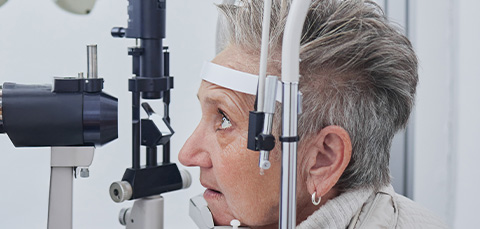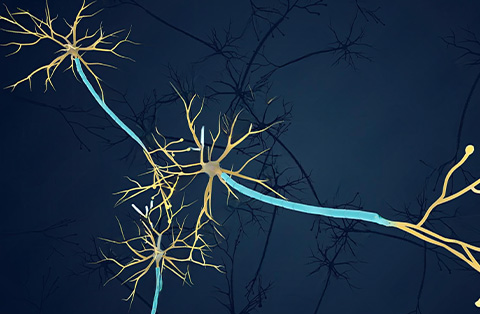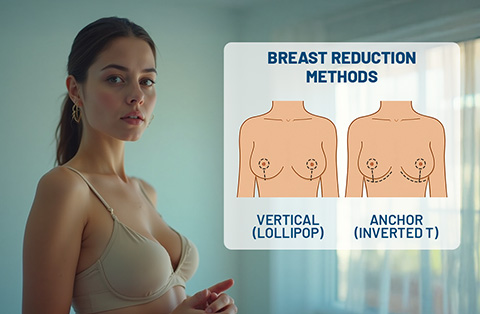Cataracts cause blurry vision, glare, and difficulty with daily tasks. Understanding their stages helps in early detection and timely treatment, ensuring clearer vision and a better quality of life.
What are the Stages of Cataract?
Cataracts develop gradually and progress through four distinct stages. Each stage affects vision differently, from mild blurriness to significant vision impairment. Understanding these stages can help in early detection and treatment.
The Four Stages of Cataract Development:
Early Stage (Initial Cataract): Minor clouding of the lens with little impact on vision. Symptoms may include slight blurriness and increased sensitivity to light occurs at early cataracts.
Immature Cataract: More noticeable clouding begins to interfere with daily activities. Vision may become hazy, and colors appear dull.
Mature Cataract: The lens becomes significantly opaque, causing blurry or cloudy vision. Night vision worsens, and reading or driving becomes difficult.
Hypermature Cataract: The most advanced stage, where the lens hardens and may leak proteins, leading to inflammation. Vision loss is severe, and surgery is necessary.
Recognizing these stages allows for timely medical intervention to prevent further vision loss.
How do Cataracts Progress Over Time?
Cataracts develop slowly, affecting vision gradually. The progression varies from person to person, depending on factors like age, genetics, and overall eye health.
How Cataracts Progress Over Time:
Early Changes: The lens starts to lose clarity, causing minor blurriness and increased light sensitivity. These changes may go unnoticed at first.
Increased Clouding: As cataracts develop, vision becomes hazy, and colors appear faded. Night vision may also decline.
Significant Impairment: The lens becomes more opaque, making daily activities like reading and driving difficult. Stronger lighting or eyeglasses may not help.
Severe Vision Loss: In the final stage, the lens hardens, and vision becomes severely limited. Surgery is the only effective treatment at this point.
Regular eye exams help track cataract progression and determine the right time for treatment.
What are the Different Types of Cataracts?
Cataracts can develop in different parts of the lens, leading to various types. Each type affects vision differently and may progress at different rates.
The Main Types of Cataracts:
Nuclear Cataract: Forms in the center of the lens and is common with aging. It causes gradual yellowing or browning of vision, making it harder to see details.
Cortical Cataract: Develops in the outer edges of the lens and spreads inward. It appears as white streaks or wedges, leading to glare and difficulty with contrast.
Posterior Subcapsular Cataract: Affects the back of the lens, often progressing quickly. It causes glare, halos around lights, and difficulty seeing in bright conditions.
Congenital Cataract: Present at birth or develops in early childhood due to genetic factors, infections, or metabolic conditions. It may require early treatment to prevent vision problems.
Traumatic Cataract: Results from an eye injury, which can cause clouding immediately or years later.
Secondary Cataract: Develops due to medical conditions like diabetes or as a side effect of medications such as steroids.
Identifying the type of cataract helps in determining the best treatment approach.
When Should You be Concerned About Cataracts?
Cataracts develop gradually, but certain symptoms indicate the need for medical attention. Early detection can prevent significant vision loss and improve treatment outcomes.
Signs to Be Concerned About:
Blurry or Cloudy Vision: If vision becomes consistently hazy, making it hard to read or recognize faces.
Increased Sensitivity to Light: Difficulty with bright lights, glare, or halos around headlights at night.
Fading or Yellowing of Colors: Colors appear dull, making it harder to distinguish shades.
Frequent Prescription Changes: If glasses or contact lenses no longer improve vision effectively.
Poor Night Vision: Difficulty seeing in low light or increased glare from streetlights.
Double Vision in One Eye: Seeing multiple images even when using one eye can indicate cataract progression.
If these symptoms affect daily life, an eye exam is necessary. Cataract surgery may be recommended when vision impairment interferes with routine activities.
How Does the Grading Scale Work for Cataracts?
Cataracts are graded based on their severity and impact on vision. The grading scale helps ophthalmologist assess progression and determine the right time for treatment.
Cataract Grading Scale:
Grade 1 (Mild Cataract): Early clouding with minimal effect on vision. Some light sensitivity or slight blurriness may be noticeable.
Grade 2 (Moderate Cataract): Increased opacity of the lens. Vision becomes hazier, and glare from lights may worsen, especially at night.
Grade 3 (Severe Cataract): Significant clouding that affects daily activities. Reading, driving, and recognizing faces become difficult.
Grade 4 (Mature or Hypermature Cataract): The lens is completely opaque, leading to severe vision loss. Surgery is necessary to restore sight.
This grading scale helps monitor cataract progression and decide when intervention is needed.
What are the Symptoms of Cataracts at Each Stage?
Cataract symptoms worsen as the condition progresses. Each stage affects vision differently, from mild blurriness to severe vision impairment.
Symptoms at Each Stage:
Early Stage (Initial Cataract):
Slightly blurred or hazy vision
Increased sensitivity to bright lights
Mild glare or halos around lights
No significant impact on daily activities
Immature Cataract:
Noticeable blurriness and cloudy vision
Colors appear faded or yellowish
Increased difficulty seeing in dim lighting
More glare and halos, especially at night
Mature Cataract:
Significant vision loss and clouding
Trouble reading, driving, or recognizing faces
Poor night vision and extreme sensitivity to light
Glasses or stronger lighting no longer help
Hypermature Cataract:
Severe vision impairment or near blindness
The lens hardens and may cause eye inflammation
Increased risk of complications like glaucoma
Surgery is the only effective treatment
Recognizing symptoms early allows for timely treatment and better vision outcomes.
When Should You Consider Cataract Treatment?
Cataract treatment is necessary when vision problems interfere with daily activities. The right time for treatment depends on symptom severity and lifestyle needs.
When to Consider Cataract Treatment:
Blurry or Cloudy Vision Affects Daily Life: If reading, driving, or recognizing faces becomes difficult.
Glare and Light Sensitivity Increase: If bright lights, headlights, or sunlight cause discomfort.
Frequent Eyeglass Prescription Changes: If vision worsens despite new glasses.
Poor Night Vision: If driving at night becomes unsafe due to halos and glare.
Severe Vision Impairment: If cataracts reach an advanced stage, limiting independence.
Mild cataracts may not require immediate treatment, but regular eye exams help track progression. Surgery is the most effective option when vision loss becomes significant.





